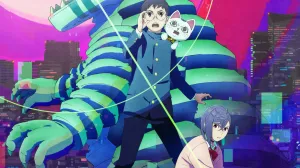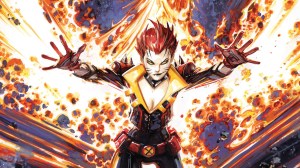
The post-San Diego Comic Con coverage from fellow comics site ICv2 has been nothing short of outstanding. In addition to excellent analysis of the comics market, they have produced recent essays with many of the industry’s leaders, including an interview with Image Comics publisher Eric Stephenson last week. That discussion worked its way across all sorts of important issues facing local stores up to the entire comics industry writ large, seeking answers and insight from the point man leading creator-owned comics in the direct market.
Videos by ComicBook.com
We recommend anyone interested in learning more about the biggest challenges facing the business side of comics read the interview in its entirety. However, it’s also worth analyzing Stephenson’s remarks to see what additional lessons might be inferred from these questions and answers. We’ve applied some of our best minds to pick out key takeaways from this top-notch interview that are well worth considering.
1. Comics Are Price Elastic Goods
Early in the conversation there is discussion regarding the current perception of a sales drought in the comics market and the doldrums of past years. When Stephenson points to sales being better today than they were one decade ago, the interviewer, Milton Griepp, wisely noted that period also corresponds with the largest global recession since the Great Depression.
This brief point should not remain understated. The direct market was very responsive to changes in the economy during that period, suggesting that comics sales are more likely to decrease in response to job loss or inflation. Sales are certainly performing better today, but there’s little evidence to suggest that those improvements reflect more than ten years of steady recovery and growth. It also potentially bodes ill considering the forecast held by a majority of economists that another recession is looming.
2. Direct Market Stability is Fleeting
Looking for examples of what has generated both good sales and positive coverage of the market, Stephenson provides a list of initiatives that have largely soured with memory. Both the “New 52” and Marvel NOW! offered a surge in sales that quickly waned after their early days and could not be replicated by similar efforts. The decreasing returns for publishing initiatives from Marvel and DC Comics, combined with the lack of new creator-owned titles, like Saga and East of West, from the same period should remind interested parties that success in comics often moves as quickly as the weekly release cycle.
3. Single Issues are Overpriced
When discussing the trend of more comics readers awaiting collected editions, Stephenson noted that a price tag of $4 or $5 was steep for a single chapter of a story that could later be read for much less. The high price of comics compared to other forms of entertainment is no secret, but what’s clear from this interview is that there are no new solutions being offered. While talk of providing a more complete story in each issue sounds good, there’s no evidence to suggest that this can sustain more than the few rare examples, like Saga and Immortal Hulk, offered here.

4. Saga is Returning Soon
One possible silver lining to these clouds of discussion is how readily Stephenson mentions both Saga and its impending return. The hit series, Image Comics’ best remaining seller after The Walking Dead concluded, has been on hiatus for just over a year. It would seem like poor form to mention a much-anticipated return if there was any chance that said return would not materialize. Better to avoid the issue altogether and avoid embarassment if plan for the return of Saga were not already in the works. A surprise early release of the series’ first compendium (collecting all 54 issues to date) combined with these references suggests that an announcement is just around the corner.
5. Image Remains Idea Oriented
Stephenson’s discussion of selecting publication styles between single volumes and monthly installments shows that his dedication to delivering new ideas has not changed much since Image Comics began making waves almost a decade ago. A clear dedication to doing what seems “right” for the material in these responses combined with a diverse list of examples throughout the interview makes it clear that Image Comics is still a publisher that focuses on story first.
6. There is No Secret Image Recipe
That same list of examples from Image Comics also shows that the publisher’s approach is no guarantee of sales success. The capital I logo has been shown to carry some cachet with readers, regularly delivering the best average creator-owned sales in recent years. However, there is a wide range in the quantity of those sales and none of the more recent examples have neared the heights of Image Comics’ biggest hits. Saga and The Walking Dead are mentioned multiple times, which only serves as a reminder that no new series has come close to either series’ status, and that doesn’t appear likely to change anytime soon.
7. There is No Obvious Next Big Thing
No comics publisher in 2019 can claim the “hit machine” status that Image Comics built for itself around 2012, though. Discussion of what is doing well in the market today showcases a mix of ideas and series, most notably Immortal Hulk, that few would have predicted as the next big thing. Outside of incentive-boosted sales from superhero publishers and rare, unpredictable hits like Immortal Hulk, there’s no rhyme or reason constructed for how a publisher can reasonably expect to expand readership or sales. This is not an Image Comics problem as much as it is a direct market problem, but there are no clear answers on what Image or any other publishers might do to continue growing the direct market beyond its current status quo.

8. Superheroes Loom Large Everywhere
Whether it’s the discussion of Immortal Hulk‘s success at the end of this interview or mentions of past Marvel and DC initiatives, not even an interview with the direct market’s third-largest publisher can escape thoughts of the “Big Two” for more than a couple of questions. Any discussion of the direct market requires consideration of what Marvel and DC are doing, as they compose the majority of the market. It serves as a reminder that no matter what Image and their peers might accomplish, they and every other business operating in this market operate under the shadow of two publishers owned by much, much larger corporations with little concern about local comic book stores and their fans. While they are often mentioned, this pair remains the elephant in any room where comics are discussed, one that could easily trample the industry with no warning.
Some Final Thoughts: Reflecting on Stephenson’s insights and recent interviews with other publishers and editors, a clear pattern is forming. Professionals are very familiar with the struggles of and are seeking solutions. A small and stable market is currently providing for publishers, but there are a lot of risks, including macro factors like a future recession and specifics ones like unexpected changes in Marvel or DC’s strategies. No obvious solutions are present and innovation is still needed.








